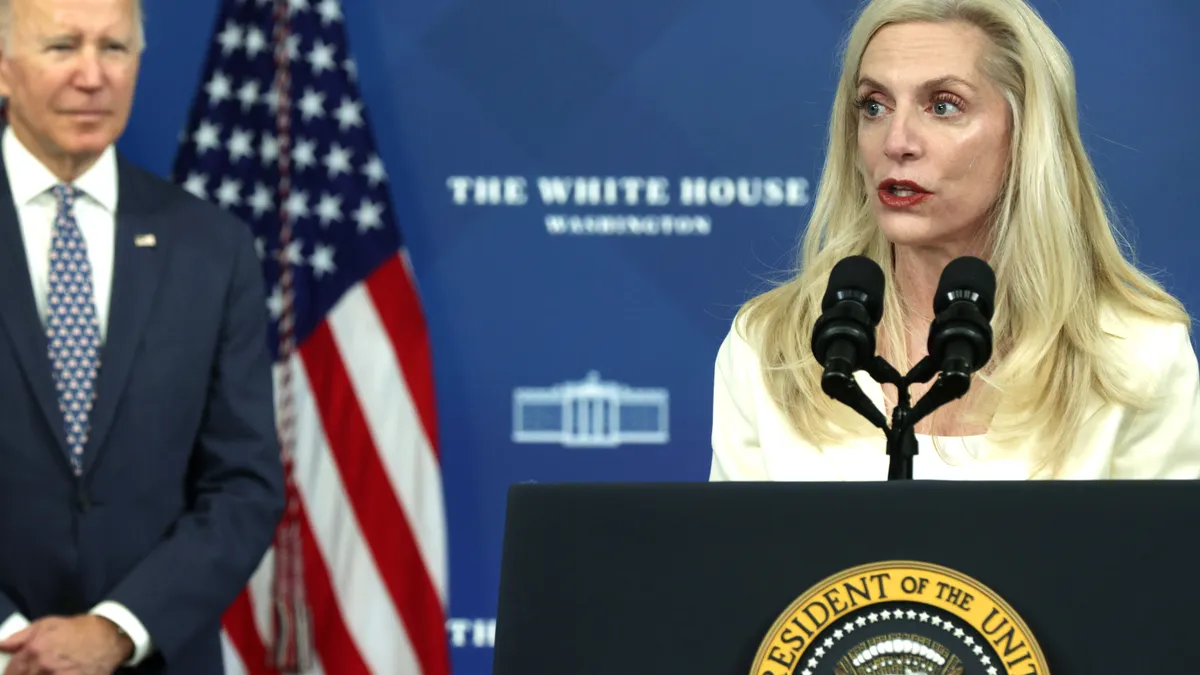Dive Brief:
- A U.S. digital dollar could “coexist with and be complementary to stablecoins and commercial bank money” in some future circumstances, Federal Reserve Vice Chair Lael Brainard said Thursday at a House Financial Services Committee hearing.
- Brainard told lawmakers the deployment of a central bank digital currency (CBDC) could help keep the Fed abreast of technological innovation in other countries and the private sector and could strengthen the role of the dollar as the global reserve currency.
- Lawmakers remain divided on the efficacy of a U.S. CBDC, with some critics arguing a digital dollar would siphon deposits away from the banking system, reducing credit availability and curbing private-sector money creation.
Dive Insight:
Thursday’s hearing came in the wake of the collapse in price of algorithmic stablecoin TerraUSD this month, and shortly after the Fed wrapped up a 120-day comment period on the CBDC report it published in January.
In testimony released before the hearing, Brainard argued that a Fed-backed digital dollar could exist side by side with commercial bank money and privately developed stablecoins, assuming robust regulatory guardrails were in place.
With proper regulation, a CBDC “could provide a safe, central bank liability as the neutral settlement layer in the digital financial ecosystem,” Brainard said. “It would actually facilitate and enable private sector innovation.”
Brainard cited the explosive growth in popularity of stablecoins in recent times as a reason regulators should step in to protect investors. She pointed to the crash of TerraUSD and Luna, as well as the temporary de-pegging of Tether this month, to highlight the need for stricter laws in the space. In doing so, Brainard concurred with Treasury Secretary Janet Yellen, who called for stronger regulation of stablecoins during a Senate Banking Committee hearing last week.
Not all lawmakers see eye to eye about the practicality and necessity of a CBDC, however.
“What specific problems, if any, will a central bank digital currency solve?” Rep. Patrick McHenry, R-NC, asked Brainard at the hearing.
Brainard, along with House Financial Services Committee Chair Maxine Waters, D-CA, contended the deployment of a CBDC could help the U.S. keep up with other nations developing CBDC projects — particularly China, which is piloting a digital yuan.
In addition, “a U.S. CBDC may be one potential way to ensure that people around the world who use the dollar can continue to rely on the strength and safety of the U.S. currency to transact and conduct business in the digital financial system,” Brainard said.
One key source of contention on the question of developing a U.S. CBDC is the impact such technology would have on the commercial banking industry.
In letters to the Fed sent Monday, banking trade groups the American Bankers Association (ABA) and the Bank Policy Institute (BPI) argued that a CBDC would pull hundreds of billions of dollars out of bank deposits, slashing banks' steadiest source of funding and vastly reducing credit availability to households and businesses.
“A widely available CBDC could serve as a substitute for commercial bank money, possibly reducing the aggregate amount of deposits in the banking system,” Brainard said. “Accordingly, if the Federal Reserve were to move forward on CBDC, it would be important to develop design features that could mitigate such risks, such as offering a non-interest bearing CBDC or limiting the amount of CBDC a consumer could hold or transfer."














